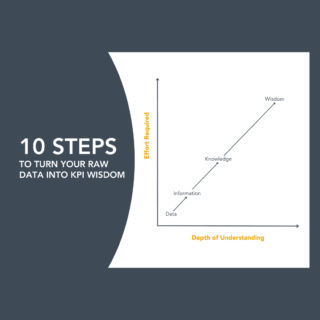Do you struggle to know where strategy ends and execution begins? Does your strategy get caught up in a whirlwind of activity, without being quite sure what has been achieved? You are not alone. If you want to do something differently this year, read on.
In the simplest terms, strategy is about setting a direction for the future so the organization can thrive, grow and improve. It’s about working out your organization’s best position relative to all the forces that create its environment (competitive or otherwise), to paraphrase Michael Porter. It’s about how you create value for your customers and critical stakeholders.
Whether for profit, not for profit or mandated into existence, organizations regularly have to lift their collective heads up to work “on the business” and not just “in it”. Hopefully, they have a rigorous process for considering what is changing in the external environment and how it might provide opportunities or challenges as the future becomes the present.
Strategy execution, on the other hand, is how the organization takes on these complex challenges and addresses the changes that were identified in the planning process. It is where teams test and pilot new approaches, map processes, unearth root causes that might help win new customers, reduce costs, or develop differentiated products and services. It is where well-crafted performance measures, tied to the strategic themes, provide a feedback loop as employees expend time, money and energy in their attempt to change and shift in pursuit of the strategy.
Why does it matter that we understand the difference?
In most cases, organizations invest inordinately more time and money in the strategic planning process than they do in the execution process and strategy performance reviews. Without a well-understood execution process, many nervous leaders start to build action plans into their strategic plans, leaving managers confused with what to do with this information. The documented actions become stale and the plans irrelevant.
When the difference between strategy and execution is not well understood, leaders can invest their time and energy in the wrong places, such as the specific issues of their business units, and get caught in an annual calendar cycle that assumes there are only a couple months a year where execution decisions can be made. Leaders can start to see project management as more important than achieving the strategic results. Often, strategic plans become a barrier to decision-making, instead of the advantage it was meant to be.
What you might do differently this year
Strategy:
- Build internal capacity and capability to conduct externally-focused environmental scans that are relevant to the business your organization is in. Ensure the scan outlines the facts and the implications that help with making strategic decisions. Make this environmental scanning a regular habit, not just an occasional project.
- Get beyond a set of goals and make decisions about where you want to win within your marketplace (even if you are not-for-profit)
- Write in plain language so people don’t have to make assumptions about what the strategy means
- Keep specific actions out of your strategy. Focus on what you want to achieve instead.
Execution:
- Invest more resources into on-going decision-making throughout the year, which allows leaders to respond to change and unexpected events as they occur. Break free of the annual calendar action-planning cycle. Change doesn’t follow a rigid planning and budgeting schedule so neither should your execution decision-making process
- Don’t simply focus on business unit specific issues. High-performing organizations focus on a few key themes or issues which span over multiple business units and require cross-functional teams to address
- Keep managers connected to the corporate strategy by having them identify issues relative to the strategic themes. Empower them to work together to tackle and solve the issues
- Have strategy reviews throughout the year and follow a reporting and discussion process that allows the executive to focus on an issue until decisions are reached on what to do next
- Encourage leaders to be open to alternatives and choices; allow for healthy debate before final decisions are made
Suggested further reading on this subject:
Stop Making Plans. Start Making Decisions by Michael Mankins
The PuMP® Performance Measure Blueprint was created by Australia’s performance measure specialist Stacey Barr. Louise Watson of Adura Strategy is Canada’s Official Partner and Licensed PuMP® Blueprint consultant.



